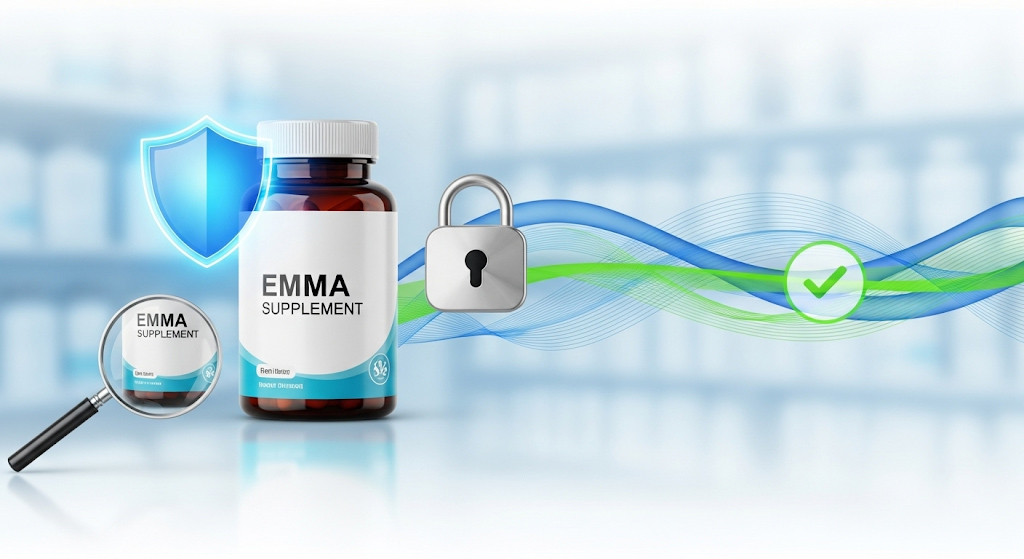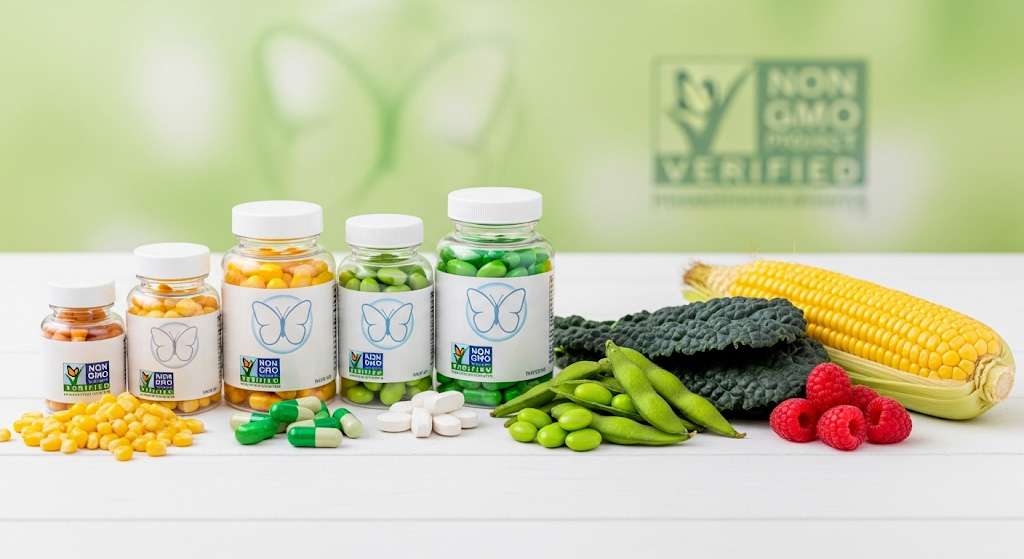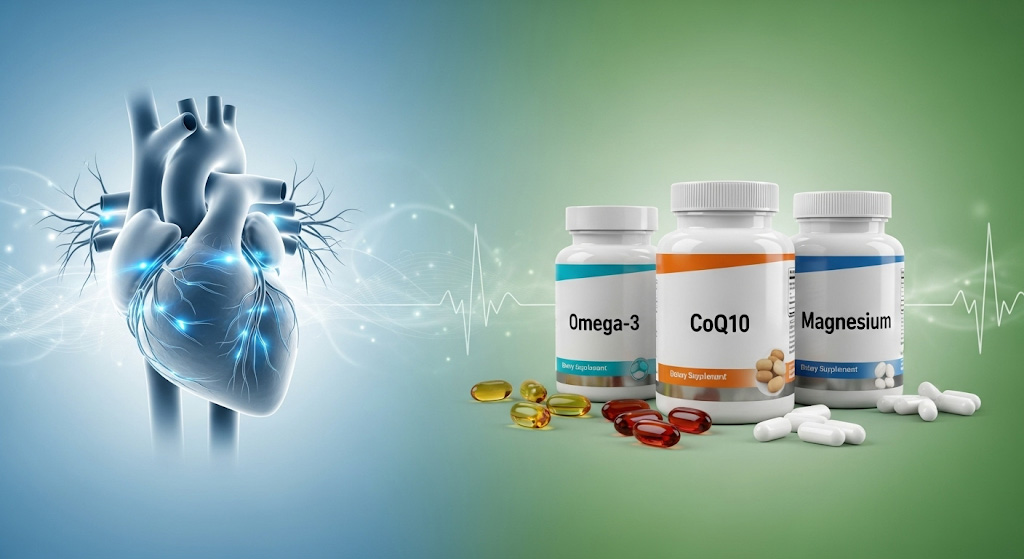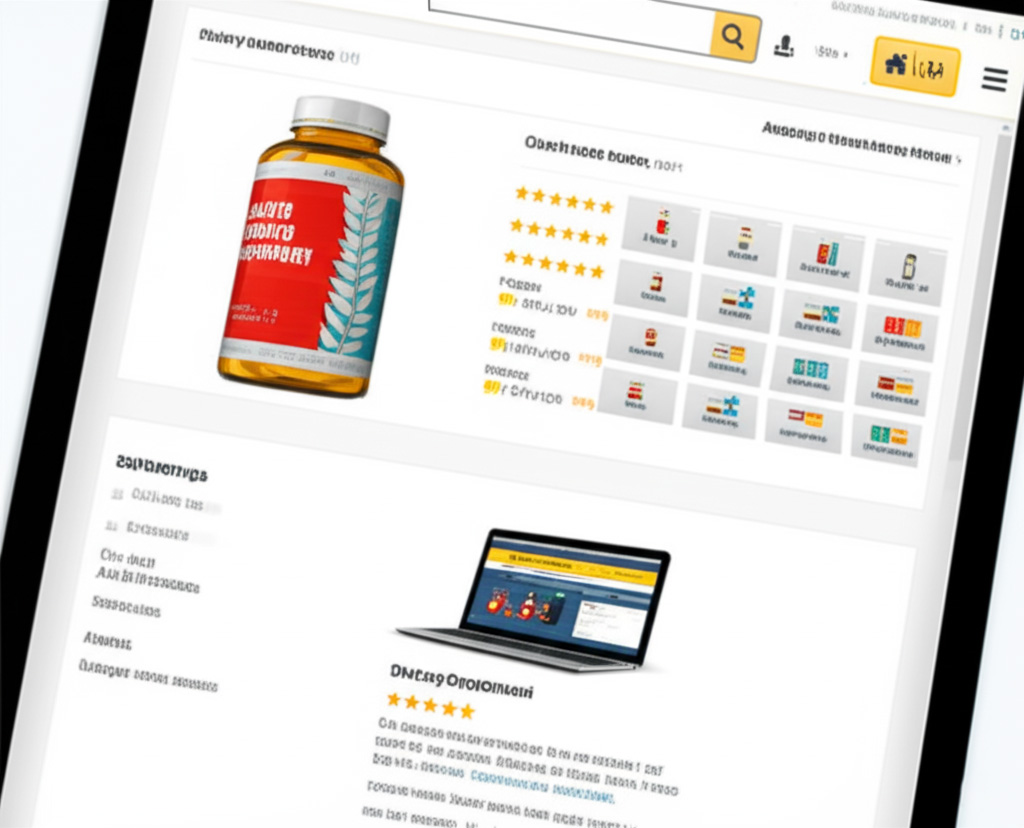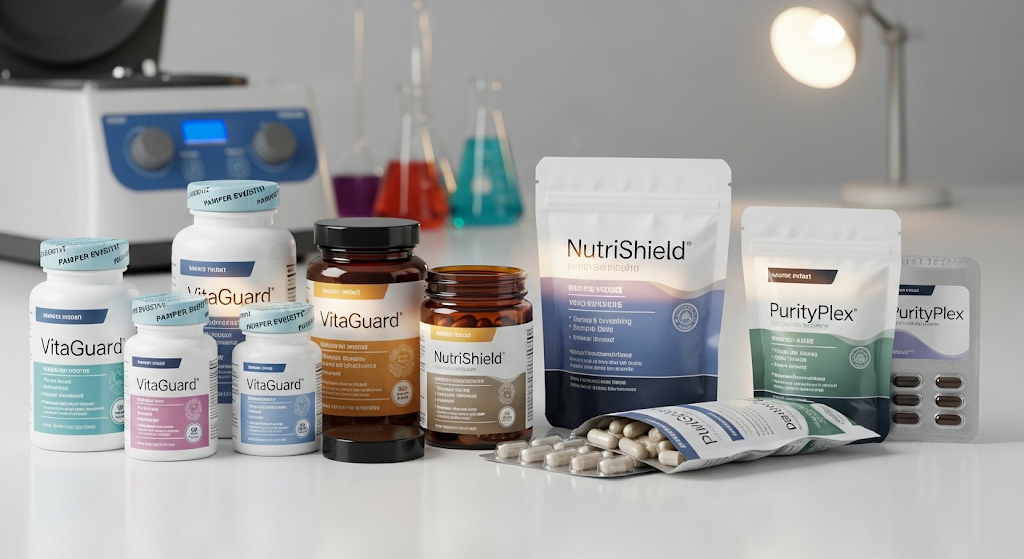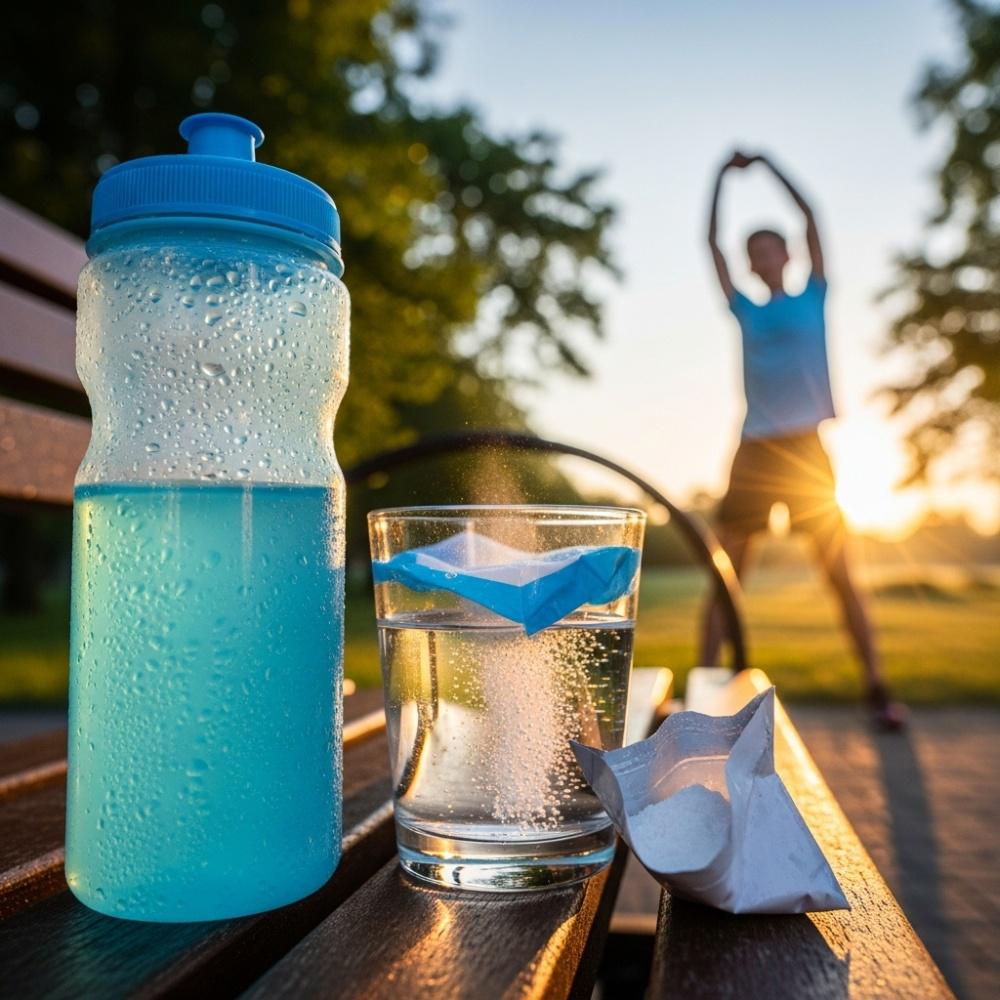Vitamin packaging might often seem like a mere container, a secondary thought for the valuable supplements held within. However, its role extends far beyond simple containment. Effective vitamin packaging is a complex and crucial interplay of cutting-edge science, stringent regulation, and strategic marketing. It's meticulously designed to rigorously protect product integrity, guarantee consumer safety, adhere to strict legal mandates, and powerfully attract customers in what is a highly competitive global market. From safeguarding the delicate potency of active ingredients to conveying brand trust and ethical sourcing, the humble vitamin bottle or pouch plays a pivotal and often underestimated role in the entire journey from manufacturer to the discerning consumer.
The Indispensable Functions of Vitamin Packaging
Vitamin packaging isn't just a container; it performs several indispensable functions that are absolutely vital for the product's quality, efficacy, and ultimately, its market success and a brand's reputation.
-
Paramount Product Protection: This is the foundational and arguably most critical role. Vitamins, whether in tablet, capsule, softgel, powder, or liquid form, are inherently susceptible to degradation from a multitude of external environmental factors. Packaging must provide a robust and multi-layered defense system against:
-
Moisture and Humidity: Water vapor is a primary enemy. Excessive humidity can lead to the rapid breakdown of sensitive active ingredients, cause powders to clump and cake, or soften and compromise the texture of gummies. Manufacturers often incorporate desiccants (like silica gel packets) directly into the packaging to absorb ambient moisture and maintain a dry micro-environment.
-
Oxygen Exposure: The presence of oxygen can trigger oxidation reactions, particularly detrimental to fat-soluble vitamins (like A, D, E, K) and unsaturated fatty acids (like Omega-3s). This leads to a significant loss of potency, changes in product color, and the development of unpleasant off-odors and flavors. Air-tight seals (such as induction liners or hermetic seals) and oxygen barrier materials are crucial to minimize this exposure.
-
Light Degradation: Both ultraviolet (UV) and even visible light wavelengths can cause the photodecomposition of light-sensitive vitamins (e.g., Vitamin A, B2 (riboflavin), B6, B12, K, and folic acid) and certain botanical extracts. To counteract this, manufacturers frequently opt for opaque or amber-colored containers (especially glass or specific plastics) that effectively block or filter harmful light wavelengths.
-
Temperature Fluctuations: While packaging doesn't provide perfect insulation, it offers a degree of protection against rapid or extreme temperature swings during transit and storage, which can affect the stability, texture, and physical form of the product (e.g., melting of softgels or gummies, caking of powders).
-
Physical Damage and Contamination: Packaging serves as a physical barrier, protecting the product from breakage, crushing, abrasion, and external contaminants (dust, dirt, microbes) during rigorous shipping, handling, and long-term storage within various supply chain points.
-
-
Uncompromising Safety and Security: Beyond merely protecting the product, packaging is the crucial first line of defense for consumer safety, preventing both intentional and unintentional harm.
-
Tamper-Evident Features: These are legally mandated and visually critical elements that clearly indicate if a product has been opened, compromised, or adulterated before purchase. Common examples include induction-sealed foil liners under the cap, shrink bands around the cap, or tear strips on pouches. These features build immediate consumer trust.
-
Child-Resistant Closures (CRCs): Mandated for many dietary supplements, particularly those containing ingredients that could be harmful if ingested in large quantities by young children (e.g., high doses of iron, certain vitamins, or flavored gummies that resemble candy). CRCs require a specific two-step action to open, making them difficult for small children but typically manageable for adults.
-
Authenticity and Anti-Counterfeiting: Advanced packaging can incorporate features like unique holographic foils, serialized QR codes, NFC tags, or invisible inks that allow brands and consumers to verify the product's authenticity and combat the growing threat of counterfeit supplements in the market.
-
-
Critical Information and Transparent Communication: The label affixed to the packaging is the primary and most direct medium for conveying essential information to both the consumer and regulatory authorities. It acts as a concise product manual and a legal document.
-
Supplement Facts Panel: This is a legally required and highly standardized panel that meticulously details all active ingredients, their precise amounts per serving, and the percentage of Daily Value (%DV) they provide. Accuracy here is paramount.
-
Comprehensive Ingredient List: A full and accurate list of all active and inactive (excipient) ingredients, typically in descending order of predominance by weight. This is crucial for consumers with allergies or dietary preferences.
-
Usage Instructions & Warnings: Clear, concise, and easy-to-understand directions on how to take the supplement (e.g., dosage, frequency, with or without food), along with any necessary precautions, contraindications, or specific allergen warnings.
-
Batch Number & Expiration/Best Before Date: These elements are absolutely vital for traceability (enabling manufacturers to track products in case of a recall or issue) and ensuring product freshness and potency within its designated shelf life.
-
Manufacturer/Distributor Information: Clear identification of the responsible party, including their name and contact details, for consumer inquiries or adverse event reporting.
-
Health Claims and Disclaimers: Any permissible structure/function claims (e.g., "supports bone health") must be clearly stated and substantiated, often accompanied by regulatory disclaimers like "This statement has not been evaluated by the Food and Drug Administration. This product is not intended to diagnose, treat, cure, or prevent any disease."
-
-
Strategic Marketing and Powerful Branding: In today's highly saturated supplement market, packaging transcends mere utility; it's a potent and silent salesperson, playing a pivotal role in attracting consumers and building brand loyalty.
-
Brand Identity and Recognition: Visual elements such as distinctive logos, consistent color schemes, unique typography, and engaging graphic design are critical for building instant brand recognition and communicating core brand values (e.g., natural, scientific, premium, eco-friendly, family-oriented).
-
Exceptional Shelf Appeal: An attractive, innovative, and unique packaging design is crucial for making products stand out prominently on crowded retail shelves and within the vast digital landscape of online storefronts. It’s often the first point of interaction.
-
Clear Value Proposition: Packaging provides prime real estate to highlight key benefits, unique selling points (e.g., "Vegan," "Non-GMO," "Organic," "Clinically Studied Ingredients," "Third-Party Tested"), and crucial product features that resonate with the target consumer.
-
Target Audience Connection: The design, colors, and imagery on the packaging should be carefully tailored to appeal directly to the intended demographic, whether it's athletes, mothers, or seniors.
-
Common Types of Vitamin Packaging Materials and Their Attributes
The selection of packaging material is a critical decision, heavily influenced by the product's physical form (powder, capsule, liquid), its chemical stability requirements, the desired shelf life, regulatory compliance, and the brand's aesthetic and sustainability goals.
-
Plastic Bottles: The most ubiquitous choice in the supplement industry.
-
Materials: Predominantly High-Density Polyethylene (HDPE) and Polyethylene Terephthalate (PET).
-
HDPE: Offers excellent moisture barrier properties, high chemical resistance, and is typically used for opaque, often white, bottles. It's lightweight and robust.
-
PET: Provides good clarity, making it suitable for showcasing colored capsules or liquids, and offers a decent barrier against oxygen. It can be clear or colored (e.g., amber, blue).
-
-
Advantages: Exceptionally lightweight, highly durable and shatter-resistant, cost-effective for mass production, widely recyclable (though rates vary), and highly versatile in terms of shape, size, and closure options.
-
Considerations: While generally good, plastics can be permeable to oxygen and moisture over very long periods, depending on the specific plastic grade and wall thickness. Opaque options are essential for light-sensitive products. Concerns exist regarding potential plasticizers or BPA (though most supplement bottles are now BPA-free).
-
-
Glass Jars: Often associated with premium or sensitive formulations.
-
Advantages: Offers unparalleled barrier properties against oxygen, moisture, and odors, making it ideal for highly sensitive or volatile ingredients. It conveys a strong sense of premium quality and purity to consumers. Amber glass is particularly effective at protecting contents from harmful UV light. Glass is non-reactive and maintains the product's integrity without leaching.
-
Considerations: Significantly heavier than plastic, leading to higher shipping costs and a larger carbon footprint in transit. It is also more fragile and susceptible to breakage, requiring more protective secondary packaging. Less practical for very large quantities due to weight and bulk.
-
-
Flexible Pouches and Sachets: Growing rapidly in popularity for various supplement forms.
-
Materials: Typically constructed from multi-layered films, engineered to create strong barriers. These layers can include PET, aluminum foil (for superior oxygen and moisture barrier), polyethylene (PE) for sealing, and nylon for strength.
-
Advantages: Exceptionally lightweight, highly flexible, offers a significantly lower material cost per unit compared to bottles, and ideal for single servings (sachets/stick packs) or bulk powders. Their flat form factor can optimize storage and shipping space, potentially leading to a reduced carbon footprint for some designs. Excellent surface area for branding.
-
Considerations: Less rigid protection against crushing compared to bottles. Resealability can be a challenge for multi-serving pouches if not designed effectively. Requires specialized, often high-speed, filling and sealing equipment.
-
-
Blister Packs: Common for pharmaceutical products but also used for sensitive individual doses of vitamins.
-
Materials: Typically consist of a thermoformed plastic film (e.g., PVC, PVDC, PCTFE for high barrier) for the cavity and a heat-seal coated aluminum foil for the lidding.
-
Advantages: Provides individual dose protection, offering an excellent barrier against moisture, oxygen, and contamination for each pill or capsule. They are inherently tamper-evident by design, as each dose must be pushed through the foil. Ideal for highly sensitive pills or specific dosing regimens.
-
Considerations: Generally higher cost per unit compared to bulk bottles. Can generate more material waste for the consumer. Less convenient for multiple daily doses compared to simply pouring from a bottle.
-
Transformative Innovations and Emerging Trends in Vitamin Packaging
The landscape of vitamin packaging is in constant flux, dynamically evolving in response to changing consumer demands, groundbreaking technological advancements, and an intensifying global focus on environmental responsibility.
-
Sustainability as a Core Driver: This has emerged as perhaps the single most significant force shaping packaging innovation. Brands are increasingly scrutinized for their environmental footprint.
-
Increased Use of Recycled Content: A surge in the adoption of Post-Consumer Recycled (PCR) plastics, integrating recycled materials back into new packaging to reduce reliance on virgin plastics and divert waste from landfills.
-
Biodegradable/Compostable Materials: Ongoing research and gradual adoption of plant-based plastics (e.g., PLA - polylactic acid, derived from corn starch) and other compostable materials for specific applications, aiming for packaging that can safely return to nature.
-
Reduced Material Use & Lightweighting: Engineers and designers are optimizing container designs to minimize the amount of plastic or glass used while maintaining structural integrity, reducing both material consumption and shipping emissions.
-
Refillable Systems & Bulk Options: Brands are exploring innovative models like offering concentrated refill pouches or larger bulk containers to encourage consumers to reuse their primary vitamin bottles, significantly reducing single-use plastic waste.
-
Mono-material Packaging: A design trend focusing on creating packaging from a single type of plastic (e.g., all HDPE or all PET) to vastly simplify and improve the efficiency of recycling processes.
-
-
Smart Packaging and Digital Integration: Leveraging technology to enhance both consumer engagement and supply chain transparency.
-
QR Codes / NFC Tags: These digital links printed directly on packaging or embedded within it allow consumers to instantly access a wealth of information: detailed product specifications, batch-specific Certificates of Analysis (CoAs) for authenticity verification, dosage reminders, personalized content, or even educational videos.
-
Temperature & Environmental Sensors: For highly sensitive probiotics, enzymes, or certain botanical extracts, integrated sensors can indicate if the product has been exposed to detrimental temperature excursions or excessive humidity during its journey, providing crucial quality assurance.
-
Advanced Tamper-Proof Technologies: Beyond traditional seals, innovations include advanced forensic markers, micro-text, or holographic features that are incredibly difficult to replicate, providing stronger anti-counterfeiting measures.
-
-
Enhanced Convenience and User Experience (UX): Packaging designers are focusing on making products easier and more pleasant to use.
-
User-Friendly Closures: Innovations in closures include easy-open flip-top caps, precise dosing mechanisms for powders, and more effective resealable zippers for pouches, ensuring product freshness and user convenience.
-
Single-Serve & On-the-Go Formats: The popularity of individualized servings for busy lifestyles has led to growth in liquid shots, powder stick packs, and individually wrapped gummies, emphasizing precise dosing and portability.
-
Ergonomic and Aesthetic Designs: Bottles and containers are being designed not just for function but also for form, with ergonomic shapes that are easier to hold, open, and dispense from, alongside aesthetically pleasing designs that encourage counter-top display.
-
-
Premiumization and Aesthetic Appeal: In a crowded market, packaging is key to conveying perceived value and quality.
-
Sophisticated Finishes: The use of matte finishes, soft-touch coatings, metallic accents, and embossed details elevates the tactile and visual appeal, communicating a sense of luxury and high quality.
-
Custom Molds and Unique Shapes: Moving beyond standard bottle shapes to custom molds allows brands to create truly distinctive packaging that instantly stands out on shelves and reinforces brand identity.
-
Clean Label and Minimalist Designs: Reflecting the growing consumer preference for natural, transparent products, many brands are adopting minimalist designs with clean lines, natural color palettes, and clear communication of key attributes.
-
Stringent Regulatory Compliance in Vitamin Packaging
Adherence to regulatory standards is not merely a best practice; it is an absolute, non-negotiable legal requirement for vitamin packaging across all markets. These regulations are designed to protect public health, ensure fair trade, and provide consumers with accurate information. Key regulatory areas often covered include:
-
Labeling Accuracy and Specificity: Strict rules govern the content and presentation of the Supplement Facts panel, ingredient lists, allergen declarations, and all claims made on the packaging. Regulatory bodies like the FDA (U.S.), Health Canada, and the European Food Safety Authority (EFSA) dictate precise formatting, acceptable nutrient claims, and, crucially, prohibit unsubstantiated disease claims. All claims must be truthful, not misleading, and adequately substantiated by scientific evidence.
-
Material Safety and Non-Leaching: Packaging materials must be certified as food-grade and rigorously tested to ensure they do not leach any harmful or undesirable substances (such as BPA, phthalates, or heavy metals) into the vitamin product over its shelf life, which could compromise product safety or purity.
-
Child-Resistant Packaging (CRP): As mentioned, CRP is mandatory for specific ingredients (e.g., high doses of iron, certain vitamins) or forms (e.g., flavored gummies resembling candy) to prevent accidental ingestion by young children, following specific testing protocols (e.g., according to the Poison Prevention Packaging Act in the U.S.).
-
Tamper-Evident Packaging: Regulations typically require that packaging includes features that provide clear, visible evidence if the package has been opened or tampered with prior to purchase, enhancing consumer confidence and preventing product adulteration.
-
Traceability Information: The mandatory inclusion of batch numbers and clear expiration/best before dates on packaging is crucial. This allows for rapid and efficient product recalls if safety issues arise and helps consumers ensure they are using fresh, potent products.
-
Country-Specific Regulations: It is vital for manufacturers and brands to recognize that regulations are highly dynamic and can vary significantly by country and even by region within a country. What is compliant in the U.S. may not be in the EU or Australia. Brands selling globally must conduct thorough due diligence for each target market.
Vitamin packaging is a multifaceted and indispensable discipline that extends far beyond a simple container. It is a critical component of robust product quality assurance, a silent guardian of consumer safety, a powerful and persuasive communication tool, and an essential element in establishing a strong brand identity and differentiation in a competitive marketplace. As the global nutraceutical industry continues its rapid expansion, innovation in packaging will remain at the forefront, continually balancing the complex demands of superior product protection, evolving sustainability imperatives, stringent regulatory compliance, and captivating consumer appeal to deliver high-quality, safe, and effective supplements to an increasingly health-conscious global population.
References and Further Reading:
-
U.S. Food & Drug Administration (FDA) – Dietary Supplements:
-
United States Pharmacopeia (USP) – Dietary Supplements:
-
National Institutes of Health (NIH) – Office of Dietary Supplements (ODS):

